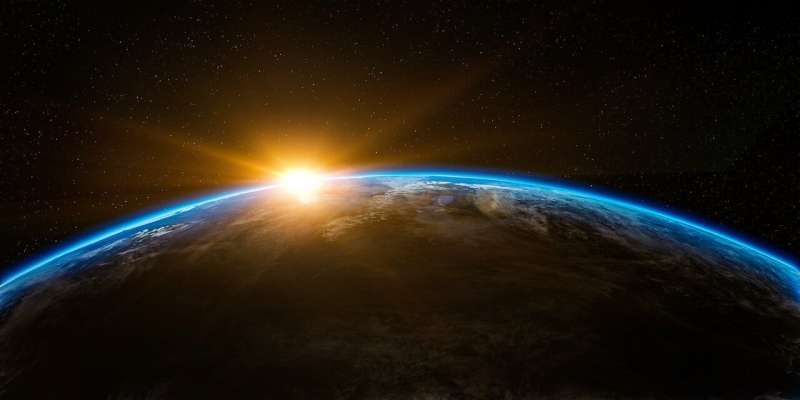
A swarm of crab-like creatures were found 1,600 feet under the Antarctic ice in a freshwater river, signifying an unexplored ecosystem.

Totality was visible only in Antarctica on early Saturday, experienced by a small number of scientists experts and adventure tourists.

A recent study notes that the Atlantic Meridional Overturning Circulation (AMOC) is losing its stability. Modelling studies have shown that an AMOC shutdown would cool the northern hemisphere and decrease rainfall over Europe.

There may have been as many as 100 sinkholes in and around the two communities. Some of the holes appeared in remote areas, while many others appeared within yards from people's homes or beneath homes.

A new study of ancient geological events suggests that our planet has a slow, steady 'heartbeat' of geological activity every 27 million years or so. But we dont' know what causes it.

The enhanced growth on one side of the core suggests that something in Earth’s outer core or mantle under Indonesia is removing heat from the inner core at a faster rate than on the opposite side, under Brazil.

Scientists from Scripps and the NOAA reported that levels of atmospheric carbon dioxide peaked in May, reaching a monthly average of nearly 419 parts per million.

Recently Australian researchers found the first ever evidence of a plutonium radioactive isotope in the Earth's crust that originally came from outer space, namely a supernova.

Scientists have found that lightning bolts and, surprisingly, subvisible discharges that cannot be seen by cameras or the naked eye lead chemical reactions breaks down molecules like the greenhouse gas methane.

Direct observations for the first time confirmed the long-standing predictions: radiative forcings of Earth are increasing due to human actions, affecting the planet’s energy balance and ultimately causing climate change.

If to cut the planet in half at the 60 degree longitude line, the half of the planet that consists mainly of the Pacific Ocean allowed much more heat to escape than the hemisphere that includes Africa, Europe and Asia.

Geoscientists have released a video that for the first time shows the uninterrupted movement of the Earth’s tectonic plates over the past billion years. On a human timescale however - things move in cm per year.

European Space Station observatory has recorded five blue flashes from the top of a storm cloud, one of which ended with a blue jet streaking high into the stratosphere. Our understanding of these blue jet lightnings is limited.

Scientists around the world have noted that the Earth has been spinning on its axis faster lately - the fastest ever recorded in decades. Scientists say we may need to cut an entire second out of the year.

The mass of human-made products at the start of the 20th ct was about 3% of the Earth’s biomass. However, due to increased urbanization and consumption, human-produced weight now outweighs the overall global biomass.